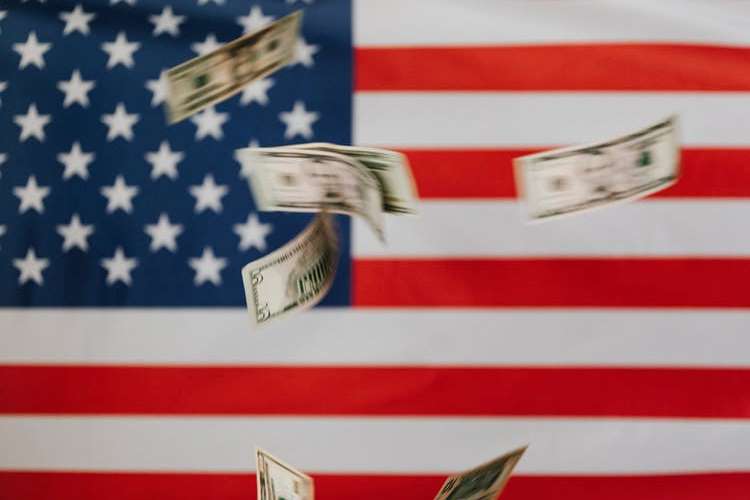To QE Or Not To QE

Image Source: Pexels
Over at Mercatus, Andrew Levin and Bill Nelson have an excellent essay on the fiscal cost of the Fed’s QE4 program. There isn’t much that I disagree with, but I’d frame a few of the issues slightly differently. The following reflects my own views, which largely but not entirely overlap with the views of Levin and Nelson:
1. According to Levin and Nelson, the Fed’s QE4 program is ultimately expected to cost taxpayers about $800 billion. This reflects the fact that the bonds that were purchased have sharply declined in value due to rising interest rates.
2. These losses cannot easily be avoided by holding the bonds to maturity and refusing to pay interest on bank reserves. Doing so would cause inflation to explode. The loss is real.
3. However, there is a sense in which these losses are illusionary. The Fed is part of the consolidated balance sheet of the federal government, and the Fed’s holdings of T-bonds are a liability of the Treasury. The Treasury gains when T-bond prices decline. So in one sense the gains and losses net out to zero. Even the fact that some of the bonds are MBSs doesn’t really change that fact.
4. But in a counterfactual sense, the $800 billion loss is real. If the Fed had not purchased these bonds, the Treasury would have profited handsomely from rising interest rates reducing the market value of its liabilities. The Fed took away that profit, and thus effectively cost the Treasury about $800 billion.
5. This loss is similar to the loss that would have been incurred if the Fed had not done QE, but Treasury officials had decided to issue lots of T-bills instead of long-term T-bonds right before a period of sharply rising interest rates. Ultimately, it’s a loss from choosing the wrong maturity structure for federal liabilities—too much short-term debt (or bank reserves) during a period of rising rates.
6. If markets are efficient, then the expected profit or loss from QE is rather small, ex ante. But if the central bank has inside information on its future policy, it may be able to beat the market. Surprisingly, I don’t believe the Fed does have inside information on future Fed policy.
7. The Fed profited somewhat from the first three QE programs as rates remained lower than expected, and lost much more from QE4 as rates rose more than expected.
8. The impact of QE on the fiscal position of the government should also account for changes in the macroeconomy that result from QE. This is an exceedingly complex issue.
9. Two policy reforms would allow the Fed to achieve its macroeconomic objectives with a much smaller balance sheet, and hence much less risk of large losses on its bond portfolio. One reform would be to return regulation to the pre-2008 system, where commercial banks held very small reserve balances. Much of the recent growth in reserve balances has been driven by regulatory decisions of dubious value. Second, a regime of NGDP level targeting would lead to a higher equilibrium nominal interest rate during recessions, and reduce the amount of time that the economy is stuck at the zero lower bound.
10. If policy remains dysfunctional, then QE may be the lesser of evils. It’s better to take on some financial risk and stabilize the macro economy, rather than avoid risk and allow deep recessions. The fiscal cost of recessions is much larger than the risk associated with plausible QE programs.
11. However, the actual QE programs have not been optimal. The first three QE programs were too small; in retrospect the policy should have been more expansionary. The final program (QE4) was associated with a monetary policy that was far too expansionary. Thus QE4 was not a “price worth paying” for sound monetary policy, it was a costly program that made monetary policy even more unsound. My own view is that the initial purchases (in 2020) were appropriate, but the program should have been unwound in 2021, before the sharp increase in interest rates. This would have resulted in much smaller losses.
12. Where QE actually is necessary to achieve macro goals, it is worth doing despite the financial risks.
13. If Congress plans to investigate these losses, it needs to consider a wide range of issues. How does Congress feel about giving the Treasury wide discretion over the maturity structure of federal debt? These decisions have huge fiscal consequences and are extremely risky. How does Congress feel about regulators pressuring banks to hold massive reserve balances, even though alternative liquid assets such as T-bills are equally effective at reducing default risk? The inquiry should not merely focus on the Fed’s decision to do QE4, there are much more important questions at stake.
14. Congress needs to also think about how it views a large Fed balance sheet. My own work suggests that in the long run the size of central bank balance sheets (as a share of GDP) is strongly (negatively) correlated with the trend rate of growth in NGDP. Countries with low trend rates of NGDP growth (Japan, Switzerland, etc.) tend to have very large central bank balance sheets. Countries with relatively high trend rates of NGDP growth (Australia) tend to have small central bank balance sheets. This reflects the fact that NGDP growth drives the equilibrium nominal interest rate, and demand for base money rises sharply at near zero rates. This is the “socialism or inflation” dilemma that most conservatives refuse to address.
15. I favor abandoning the experiment of paying interest on bank reserves, which has resulted in much larger than necessary central bank balance sheets, needlessly exposing central banks to the risk of large financial losses. Go back to the pre-2008 corridor system.
More By This Author:
What Crypto Bubble?Is Employment A Lagging Indicator?
Does The US Set Global Interest Rates?



